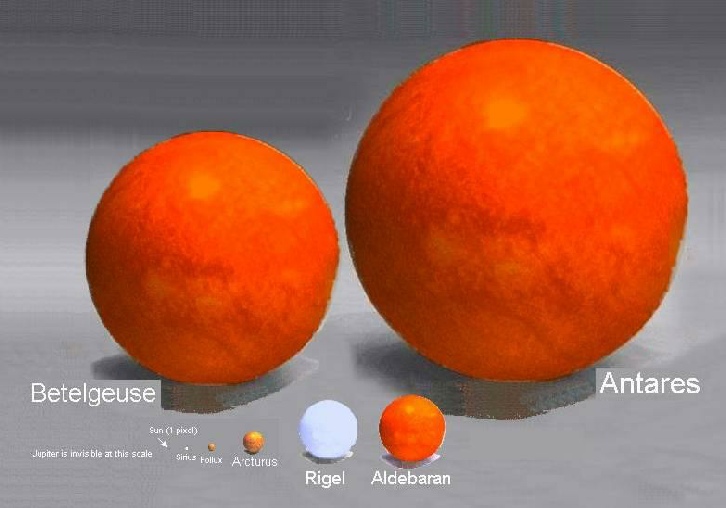The Earth in Perspective (5)
The final page in this sequence. It ought perhaps to be ‘The Sun in perspective’ at this scale as the Earth has long since shrunk to invisibility.
The final page in this sequence. It ought perhaps to be ‘The Sun in perspective’ at this scale as the Earth has long since shrunk to invisibility.
At 775 ly distance, Rigel is much further away than the stars on the previous page. It is also much, much brighter - a blue-white supergiant (B8 I) star with 17 times the mass of the Sun that shines 66,000 times brighter. It is intrinsically the brightest star within 3000 ly of Earth, and is the 7th brightest star in the sky. Rigel is actually a triple star system, with Rigel B and Rigel C both being B9 V stars (smaller than Rigel A but still very much brighter and more massive than the Sun). Rigel A’s ultimate fate may be to turn into a Red supergiant like Betelgeuse, but it might be just over the size threshold that it will instead collapse catastrophically and explode as a supernova.
Aldebaran is the 13th brightest star in the sky and is 60 ly away. It is another K5 III Orange-Red giant star which has exhausted its hydrogen fuel and is expanding uncontrollably, but at 2.5 times the mass of the sun it is more massive and thus larger than Arcturus. Aldebaran’s outer atmosphere is quite unstable, making it a short-period variable. There are unconfirmed suggestions that it has a large planet.
Like Rigel, Betelgeuse is in the constellation Orion, but at 427 ly away is rather closer, and is the 9th brightest star in the night sky. It is a Red supergiant (M2 I) star about 15 times as massive as the Sun, but there is some suggestion that it may have entered its expansion phase within the last few thousand years as 1stC BC Chinese astronomers describe it as being white in colour. If Betelgeuse were in the place of the Sun in this Solar system, Earth’s orbit would be inside it.
Similar but even larger is Antares, 600 ly away and between 15 and 18 times the mass of the Sun (an M1 I). In this solar system Antares would swallow the orbit of Mars. Antares is the 15th brightest star in the sky but its brightness can vary because its outer atmosphere is so unstable, periodically expanding and contracting. It is almost certain to become a supernova, and it could happen pretty soon (and not just soon in the astronomical sense; it could happen tomorrow). In fact as the light from Antares takes 600 year to reach us it could have already happened. If Antares does go supernova it will, for a few months, become almost as bright as the moon.
